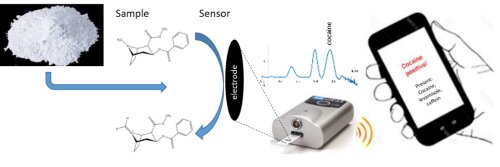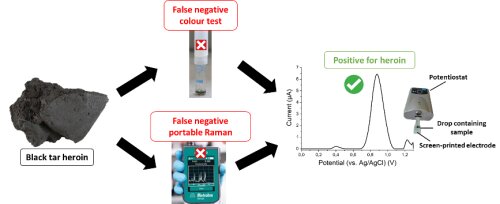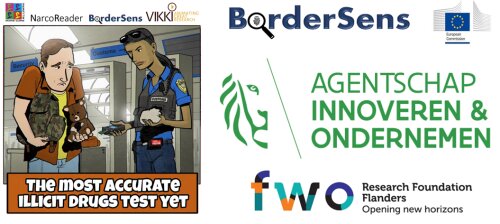NarcoReader
The trafficking and use of illicit drugs represents a serious threat to the well-being of society, with severe health, economic, and political implications. UNODC estimated that 0.25 billion people aged 16-54 used drugs at least once in 2015, with 28 million years of “healthy” life lost worldwide due to premature death and drug disabilities. Belgium plays a central role in Europe’s drug issues, being the country with the largest volume of cocaine seized, while also being one of the main producers of amphetamine and 3,4-methylenedioxymethamphetamine (MDMA).
The war on drugs in cities like Antwerp has become an important and urgent topic, making the development of new tools to fight this battle much needed.
To effectively monitor passing cargo, luggage and people on the presence of illicit drugs, customs services and law enforcement need fast, cost-effective and selective tests to screen suspicious powders, mixtures and liquids on-site.
The methods currently used to identify illicit drugs on-site, such as colour tests, lack accuracy and selectivity (only 69%), and the law mandates confirmation of these results by expensive and time-consuming chromatography-mass spectrometry methods. Thus it is imperative to develop innovative technologies that allow a fast and accurate detection of illicit drugs and thereby reduce the amount of false positives and false negatives.

Within A-Sense Lab, a new method was developed to achieve a fast (<1min) and accurate detection of narcotics at low cost, using an electrochemical sensor. By creating a specific fingerprint, the illicit drugs (such as cocaine), cutting agents and adulterants can be specifically detected on-site with the NarcoReader. Using this method, the limitations and restrictions of existing tests can be tackled (i.e. interpretation sensitivity, false positives/negatives, and environmental influences). This innovative approach is tailor-made for end-users such as border control, policemen, security guards, etc. Moreover, the developed technology is also useful to detect other chemicals, antibiotics, drugs, explosives, etc.

The valorization and technology of the developed sensor will be further explored within a Vlaio Innovation mandate (spin-off) and a European BorderSens project (Horizon 2020). This research is part of several projects with different partners: Product Development (UAntwerp), the National Institute of Criminalistics and Criminology (NICC) and Border Control (several European countries).
